Abstract
Since many communities have limited resources to devote to public health programs, and since smoking is a proved health hazard, it is important to know which factors are associated with people who successfully quit smoking, as well as to identify those subpopulations at greatest risk of continuing to smoke. A large sample survey of households in a metropolitan Florida county revealed that those who had quit smoking for at least a year tended to be married, more educated, early retirees, middle income, light or heavy (but not moderate) smokers, or older than 64 years. Nonwhite men, as a group, were found to have a high smoking rate and a low cessation rate. Other high-risk categories were persons 20--49 who were either not married or whose household incomes were less than $10,000 annually. The authors recommend that smoking cessation programs focusing on cost effectiveness gear their efforts toward the types of persons found to be more successful at quitting. Programs based on cost-benefit analysis, on the other hand, should target their efforts on the high-risk groups in the population.
Full text
PDF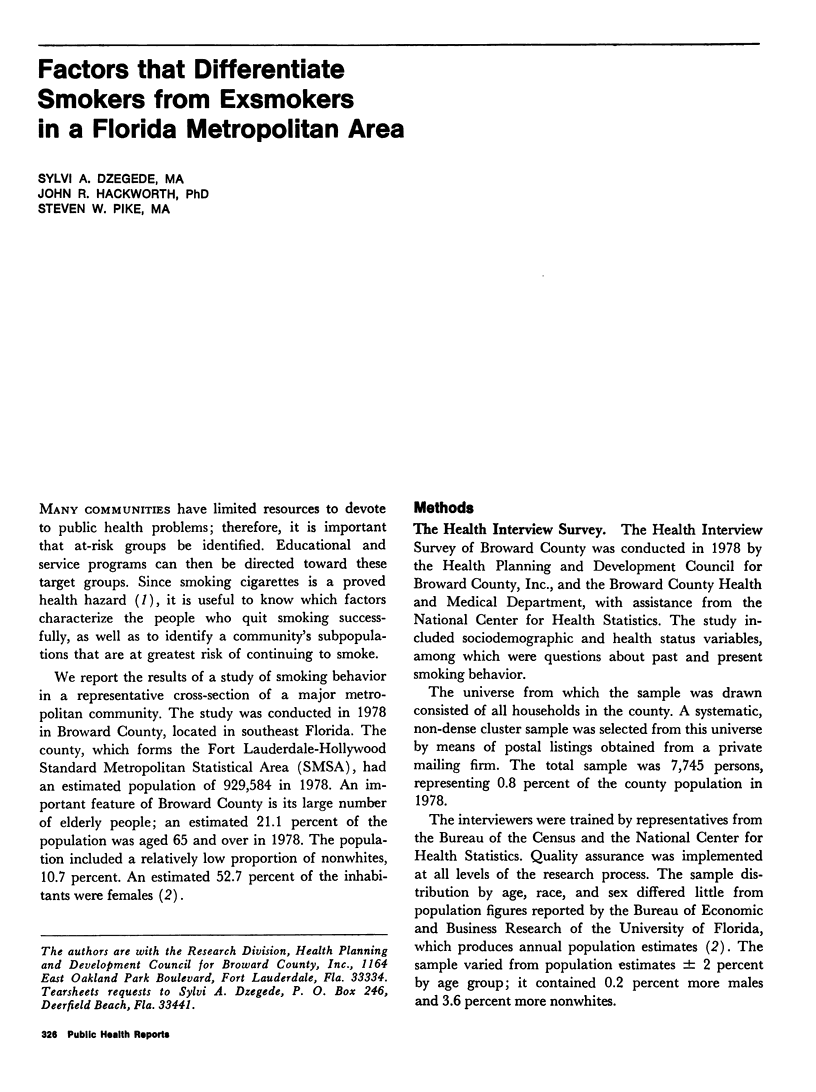
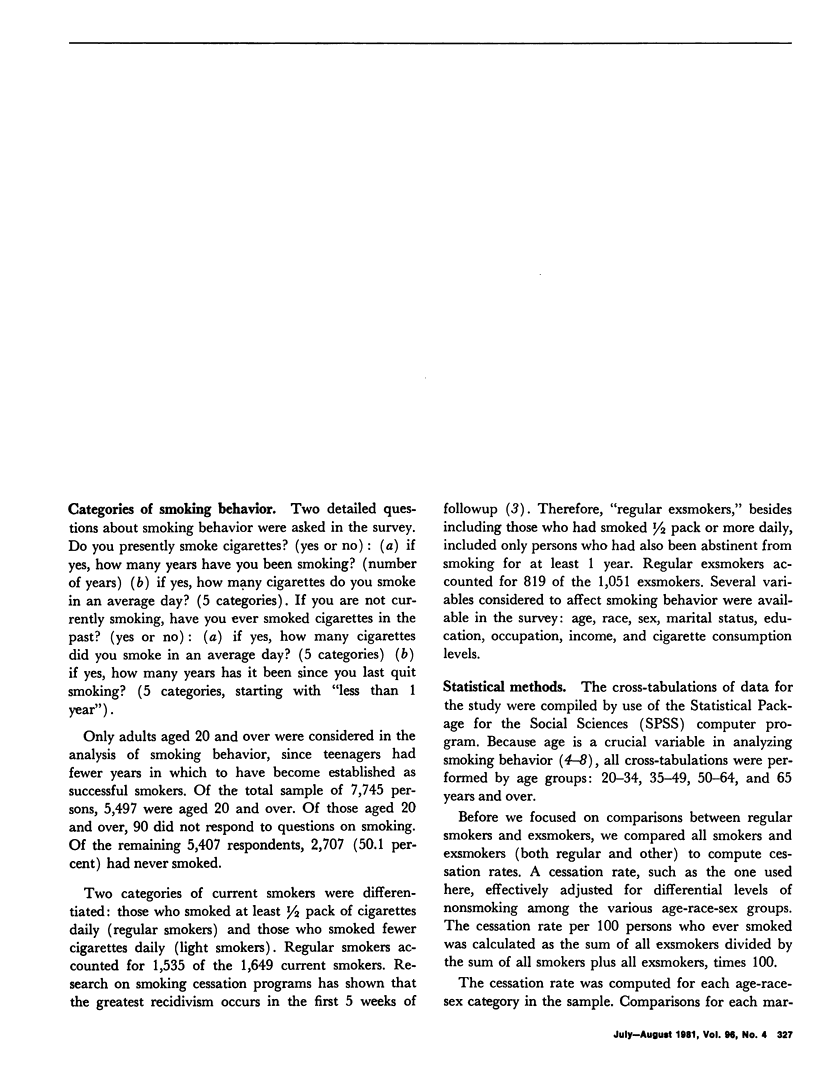
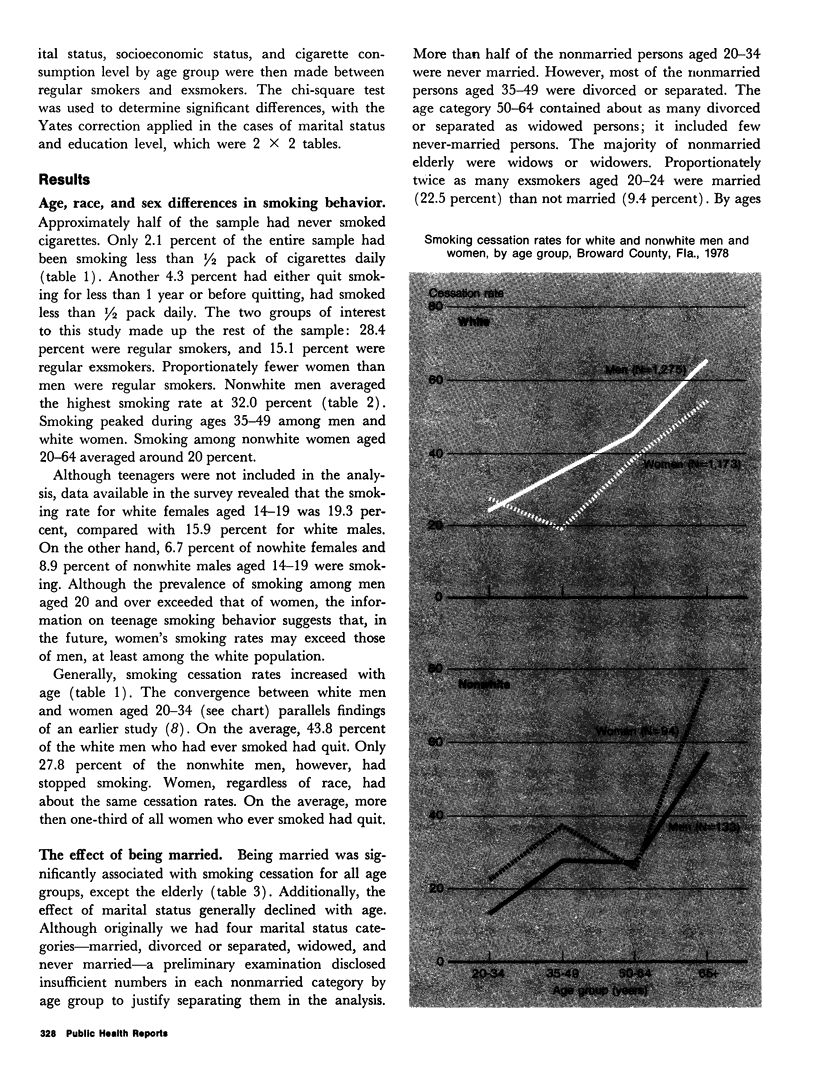


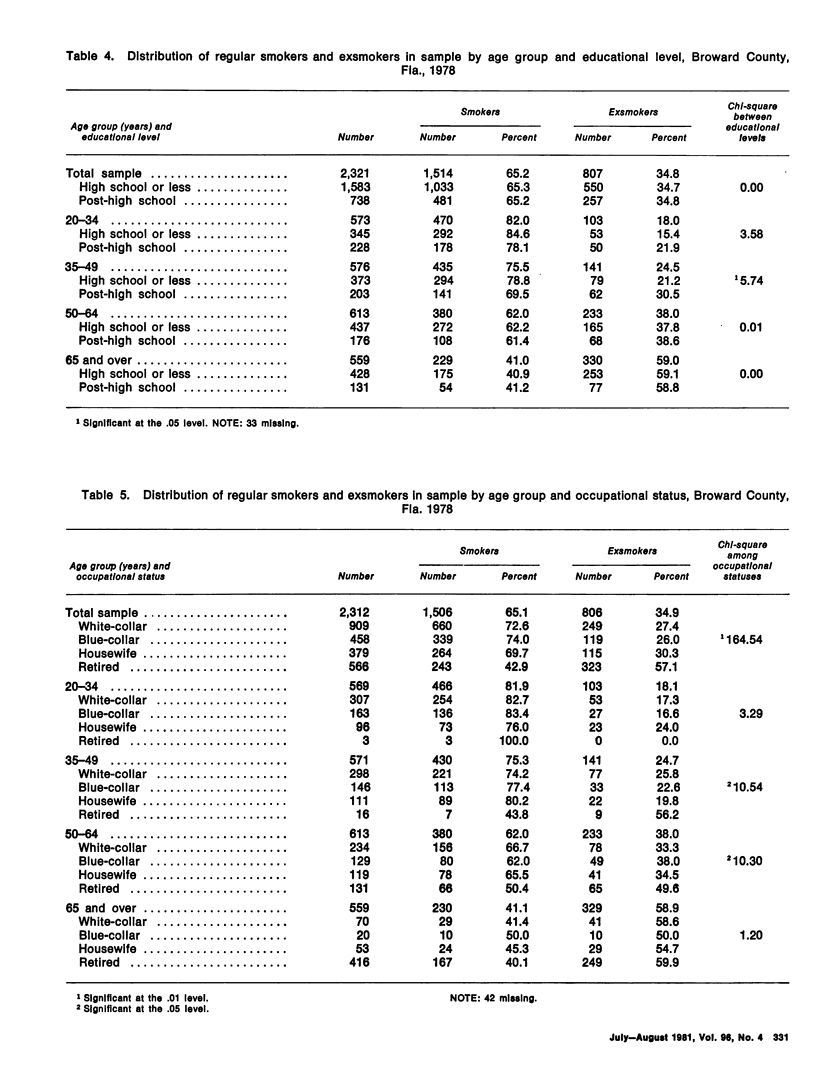
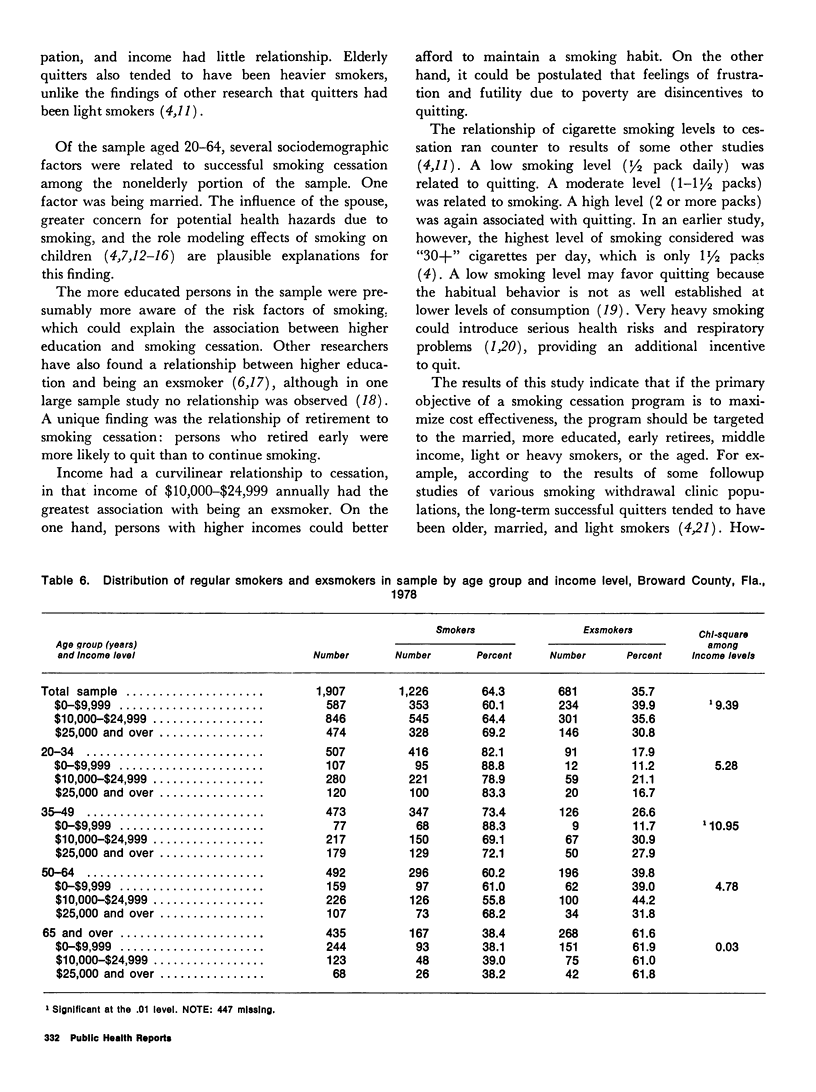
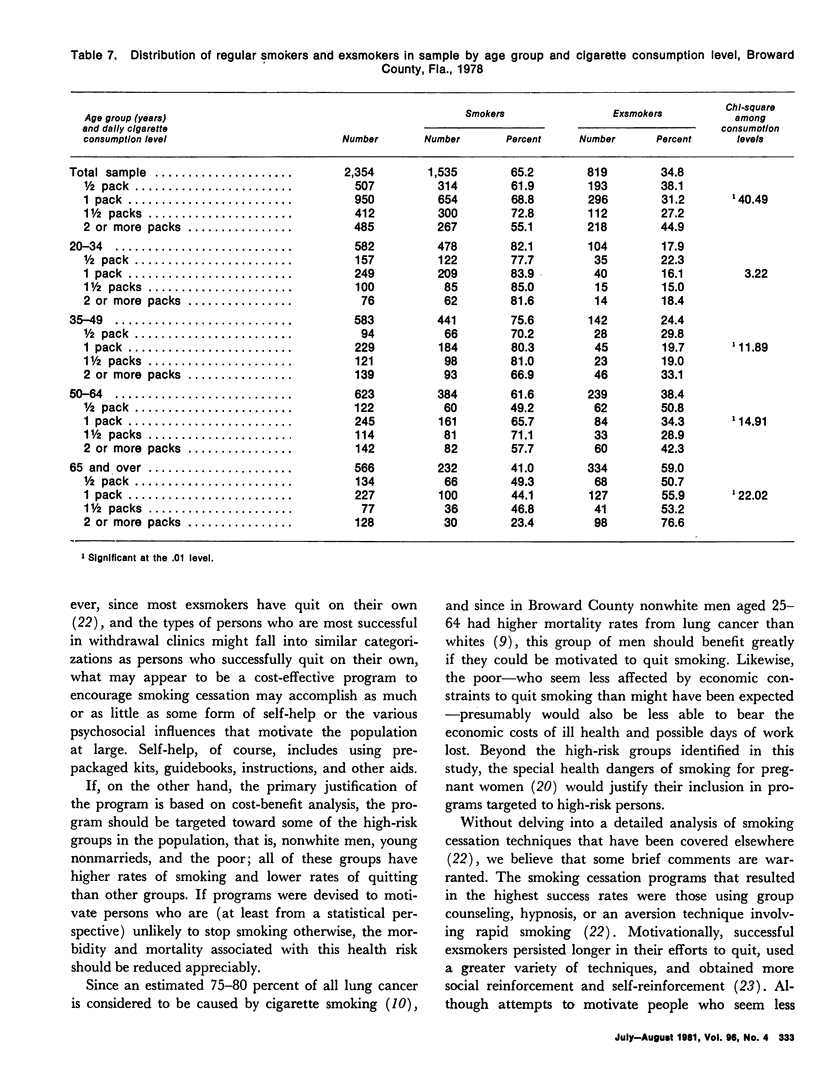
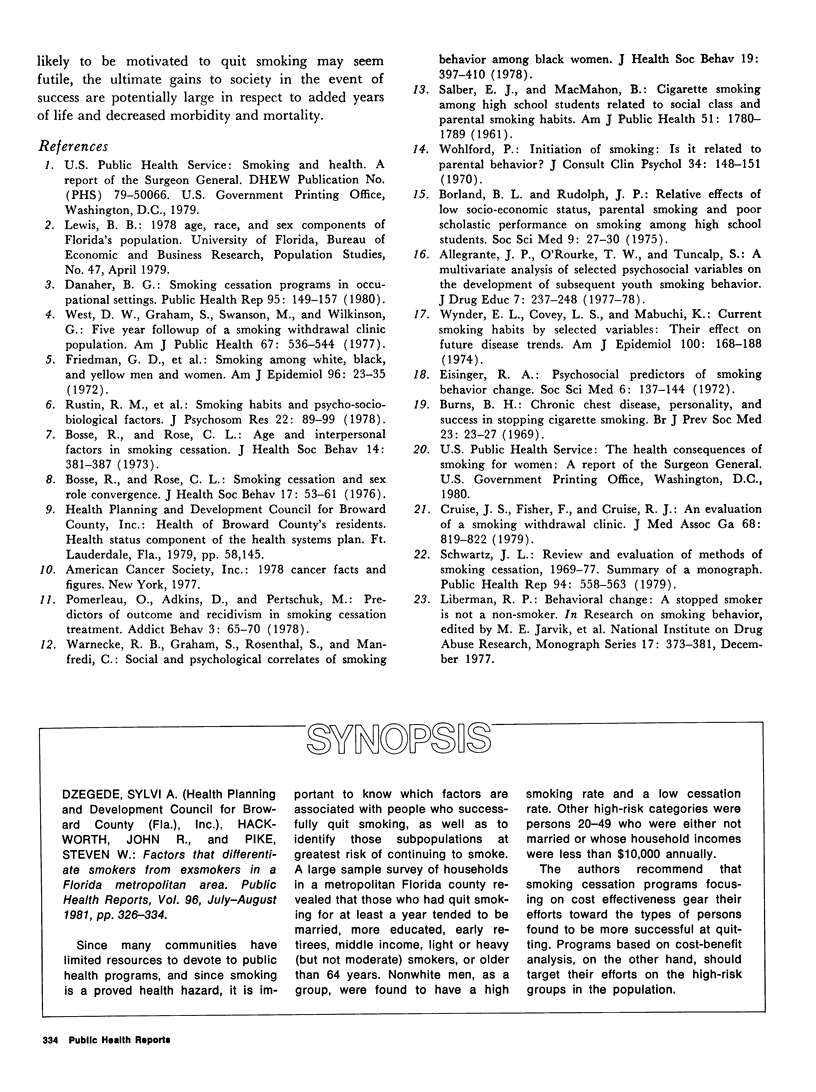
Selected References
These references are in PubMed. This may not be the complete list of references from this article.
- Borland B. L. Relative effects of low socio-economic status, parental smoking and poor scholastic performance on smoking among high school students. Soc Sci Med. 1975 Jan;9(1):27–30. doi: 10.1016/0037-7856(75)90155-9. [DOI] [PubMed] [Google Scholar]
- Bossé R., Rose C. L. Age and interpersonal factors in smoking cessation. J Health Soc Behav. 1973 Dec;14(4):381–387. [PubMed] [Google Scholar]
- Bossé R., Rose C. L. Smoking cessation and sex role convergence. J Health Soc Behav. 1976 Mar;17(1):53–61. [PubMed] [Google Scholar]
- Burns B. H. Chronic chest disease, personality, and success in stopping cigarette smoking. Br J Prev Soc Med. 1969 Feb;23(1):23–27. doi: 10.1136/jech.23.1.23. [DOI] [PMC free article] [PubMed] [Google Scholar]
- Cruise J. S., Fisher F., Cruise R. J. An evaluation of a smoking withdrawal clinic. J Med Assoc Ga. 1979 Sep;68(9):819–822. [PubMed] [Google Scholar]
- Danaher B. G. Smoking cessation programs in occupational settings. Public Health Rep. 1980 Mar-Apr;95(2):149–157. [PMC free article] [PubMed] [Google Scholar]
- Eisinger R. A. Psychosocial predictors of smoking behavior change. Soc Sci Med. 1972 Feb;6(1):137–144. doi: 10.1016/0037-7856(72)90013-3. [DOI] [PubMed] [Google Scholar]
- Friedman G. D., Seltzer C. C., Siegelaub A. B., Feldman R., Collen M. F. Smoking among white, black, and yellow men and women. Kaiser-Permanente multiphasic health examination data, 1964-1968. Am J Epidemiol. 1972 Jul;96(1):23–35. doi: 10.1093/oxfordjournals.aje.a121429. [DOI] [PubMed] [Google Scholar]
- Pomerleau O., Adkins D., Pertschuk M. Predictors of outcome and recidivism in smoking cessation treatment. Addict Behav. 1978;3(2):65–70. doi: 10.1016/0306-4603(78)90028-x. [DOI] [PubMed] [Google Scholar]
- Rustin R. M., Kittel F., Dramaix M., Kornitzer M., de Backer G. Smoking habits and psycho-socio-biological factors. J Psychosom Res. 1978;22(2):89–99. doi: 10.1016/0022-3999(78)90034-x. [DOI] [PubMed] [Google Scholar]
- SALBER E. J., MACMAHON B. Cigarette smoking among high school students related to social class and parental smoking habits. Am J Public Health Nations Health. 1961 Dec;51:1780–1789. doi: 10.2105/ajph.51.12.1780. [DOI] [PMC free article] [PubMed] [Google Scholar]
- Schwartz J. L. Review and evaluation of methods of smoking cessation, 1969-77. Summary of a monograph. Public Health Rep. 1979 Nov-Dec;94(6):558–563. [PMC free article] [PubMed] [Google Scholar]
- Warnecke R. B., Graham S., Rosenthal S., Manfredi C. Social and psychological correlates of smoking behavior among black women. J Health Soc Behav. 1978 Dec;19(4):397–410. [PubMed] [Google Scholar]
- West D. W., Graham S., Swanson M., Wilkinson G. Five year follow-up of a smoking withdrawal clinic population. Am J Public Health. 1977 Jun;67(6):536–544. doi: 10.2105/ajph.67.6.536. [DOI] [PMC free article] [PubMed] [Google Scholar]
- Wohlford P. Initiation of cigarette smoking: is it related to parental smoking behavior? J Consult Clin Psychol. 1970 Apr;34(2):148–151. doi: 10.1037/h0029001. [DOI] [PubMed] [Google Scholar]
- Wynder E. L., Covey L. S., Mabuchi K. Current smoking habits by selected background variables: Their effect on future disease trends. Am J Epidemiol. 1974 Sep;100(3):168–177. doi: 10.1093/oxfordjournals.aje.a112025. [DOI] [PubMed] [Google Scholar]


